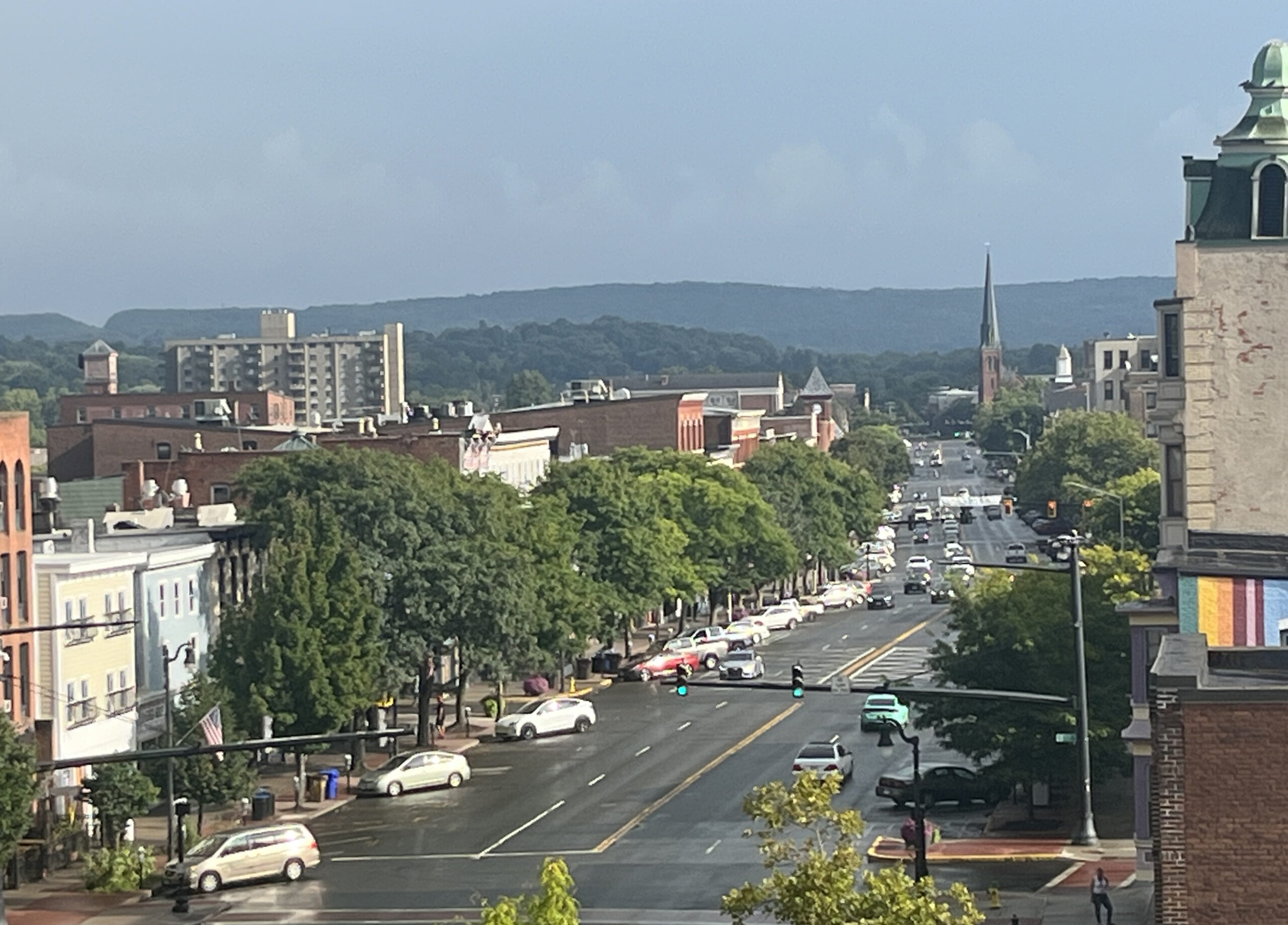
Photo by Chris Donnelly
A Middletown Urban Forestry Program
Russell Library, Hubbard Room
Thursday, September 19, 2024
5-6 pm
Introduction and Overview
Jane Harris, Chair, Middletown Urban Forestry Commission
Tree Grants, including the Street Tree Inventory
Chris Donnelly, Middletown Forester
In 2024, Middletown received a DEEP grant to conduct a tree inventory. Chris will describe ways in which you can be involved.
Tree Walks and the ‘Microforest’ Project
Steve Cronkite, Vice-Chair, Middletown Urban Forestry Commission
Steve will discuss an upcoming tree walk, open to the public, and plans for a ‘Microforest,’ based on the Miyawaki Forest concept.
Further Tree Discussions and a Look-Ahead
The people of Middletown have a great deal of interest in their trees, and trees are a fundamental part of the city’s environment. We all share in the benefits from trees. How can the community’s involvement with the urban forest be increased?
All are invited! Come hear about what is going on with the trees in Middletown. Find out how you can help.

Photo by Chris Donnelly














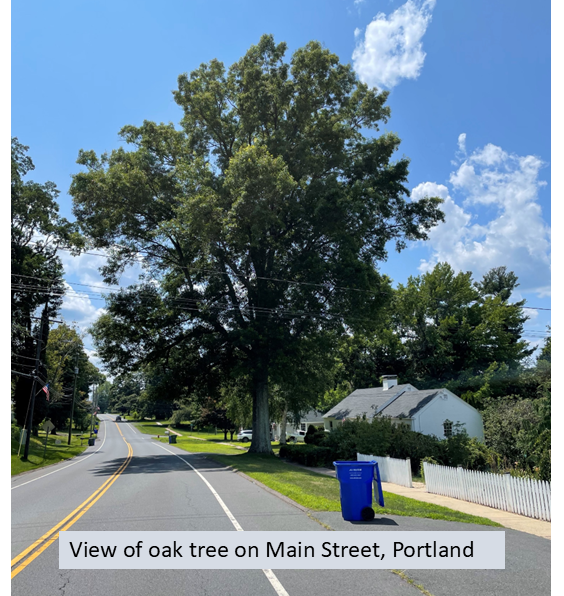 This summer, the Town of Portland constructed almost 1 mile of new sidewalk along Main Street, replacing the uneven and broken sidewalks between Arvid Street and Gildersleeve School. Before construction began, John Hall expressed concern about the danger that excavation would present to the roots of a majestic pin oak tree. With the support of residents Beau and Holly Doherty, Portland’s First Selectman Ryan Curley, and Director of Public Works Ryan O’Halpin, the original construction plan was modified to save this historic shade tree.
This summer, the Town of Portland constructed almost 1 mile of new sidewalk along Main Street, replacing the uneven and broken sidewalks between Arvid Street and Gildersleeve School. Before construction began, John Hall expressed concern about the danger that excavation would present to the roots of a majestic pin oak tree. With the support of residents Beau and Holly Doherty, Portland’s First Selectman Ryan Curley, and Director of Public Works Ryan O’Halpin, the original construction plan was modified to save this historic shade tree.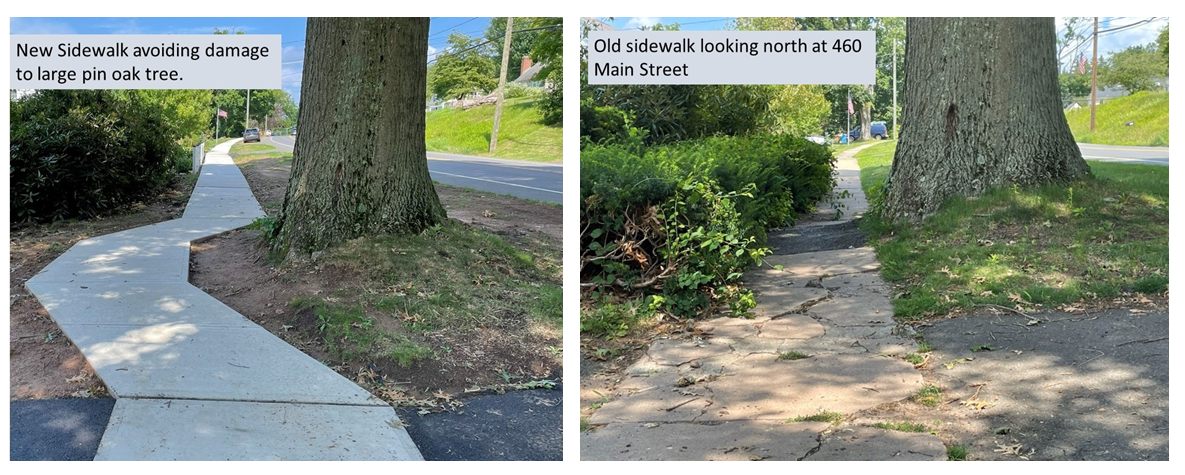
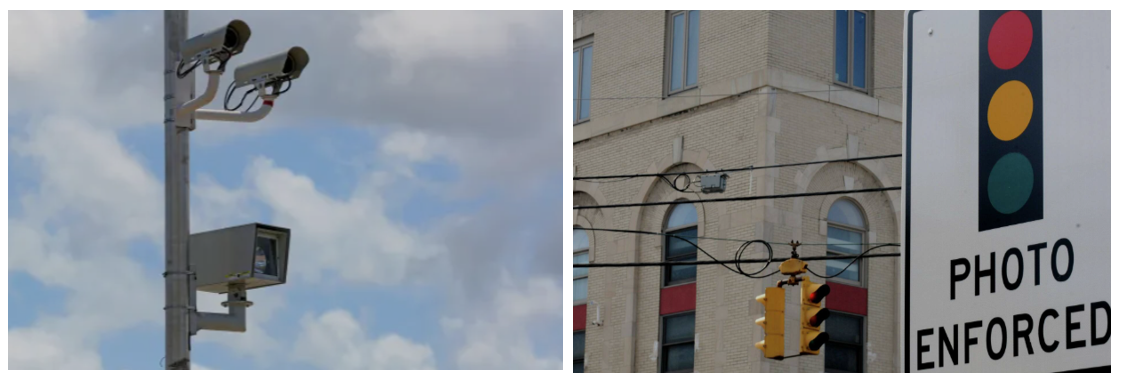 We thank all who responded to the Jonah Center’s February 2024 survey on Automated Traffic Enforcement Safety Devices (ATESDs) also known as speed and red-light cameras. We submitted to the City of Middletown the list of names and addresses of those in favor of using this technology to make our streets safer.
We thank all who responded to the Jonah Center’s February 2024 survey on Automated Traffic Enforcement Safety Devices (ATESDs) also known as speed and red-light cameras. We submitted to the City of Middletown the list of names and addresses of those in favor of using this technology to make our streets safer. 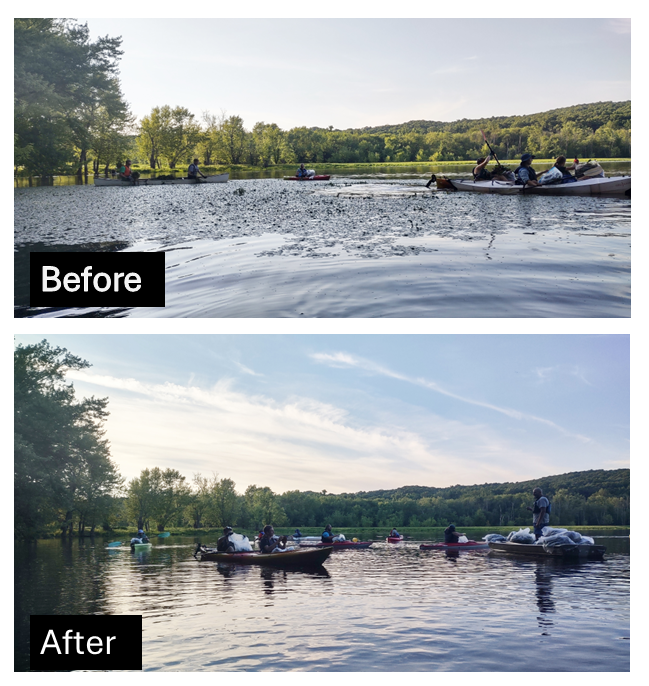
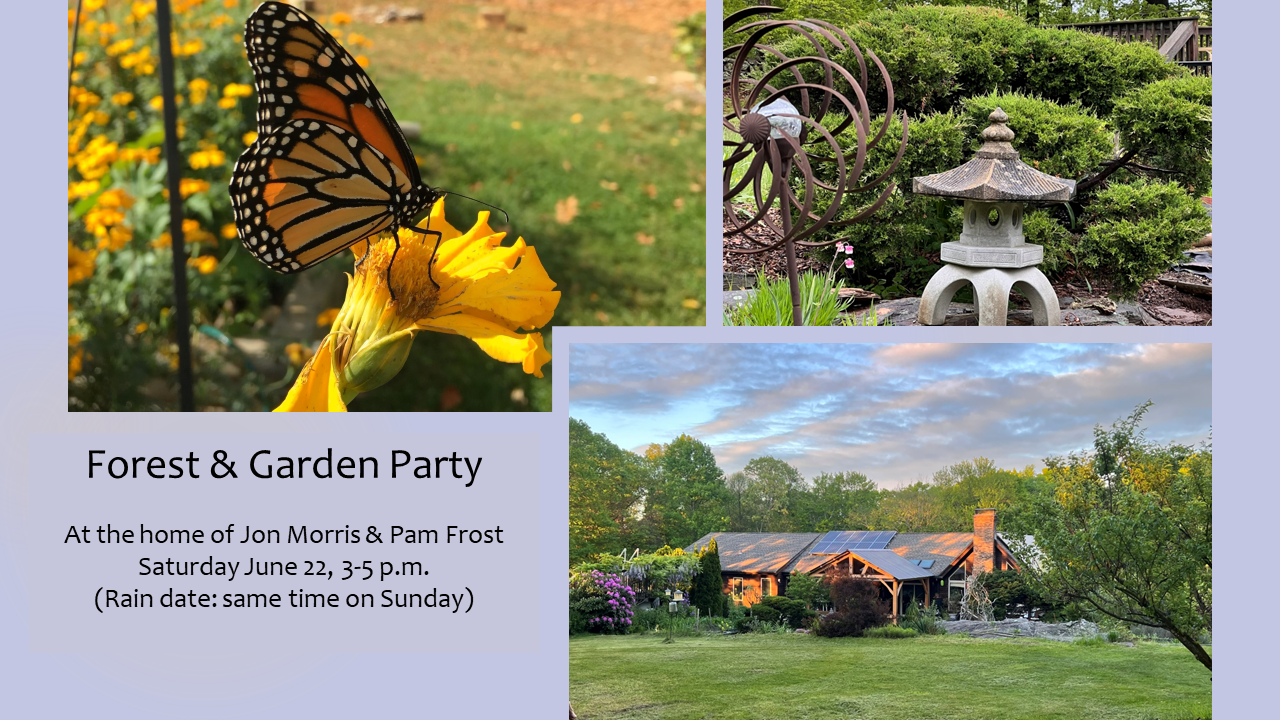

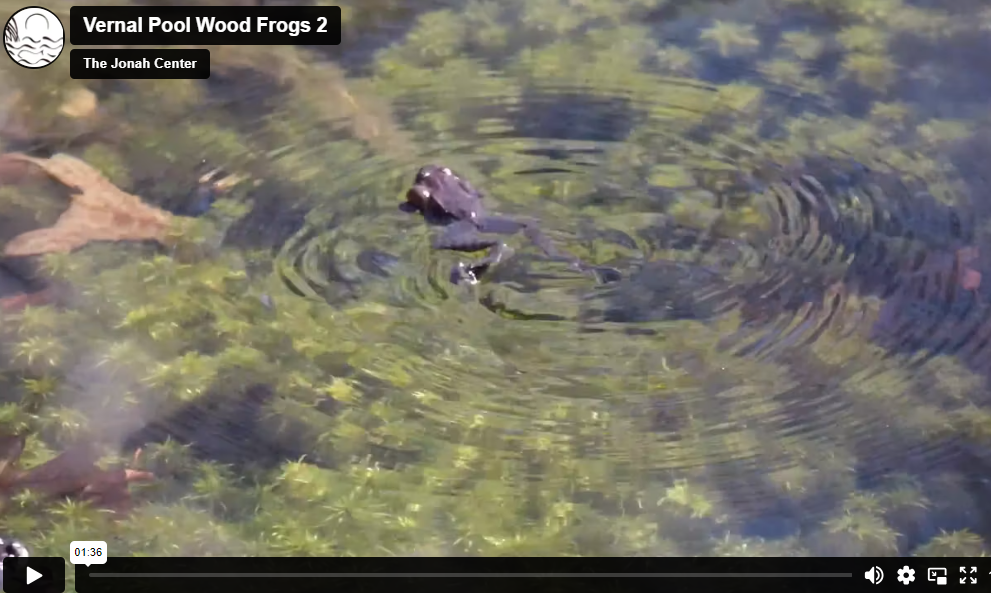

 Below is a list of bills before the Connecticut General Assembly known to be of interest to individuals within the Jonah Center and Ecoin network. All of these bills are supported by the Connecticut League of Conservation Voters.
Below is a list of bills before the Connecticut General Assembly known to be of interest to individuals within the Jonah Center and Ecoin network. All of these bills are supported by the Connecticut League of Conservation Voters.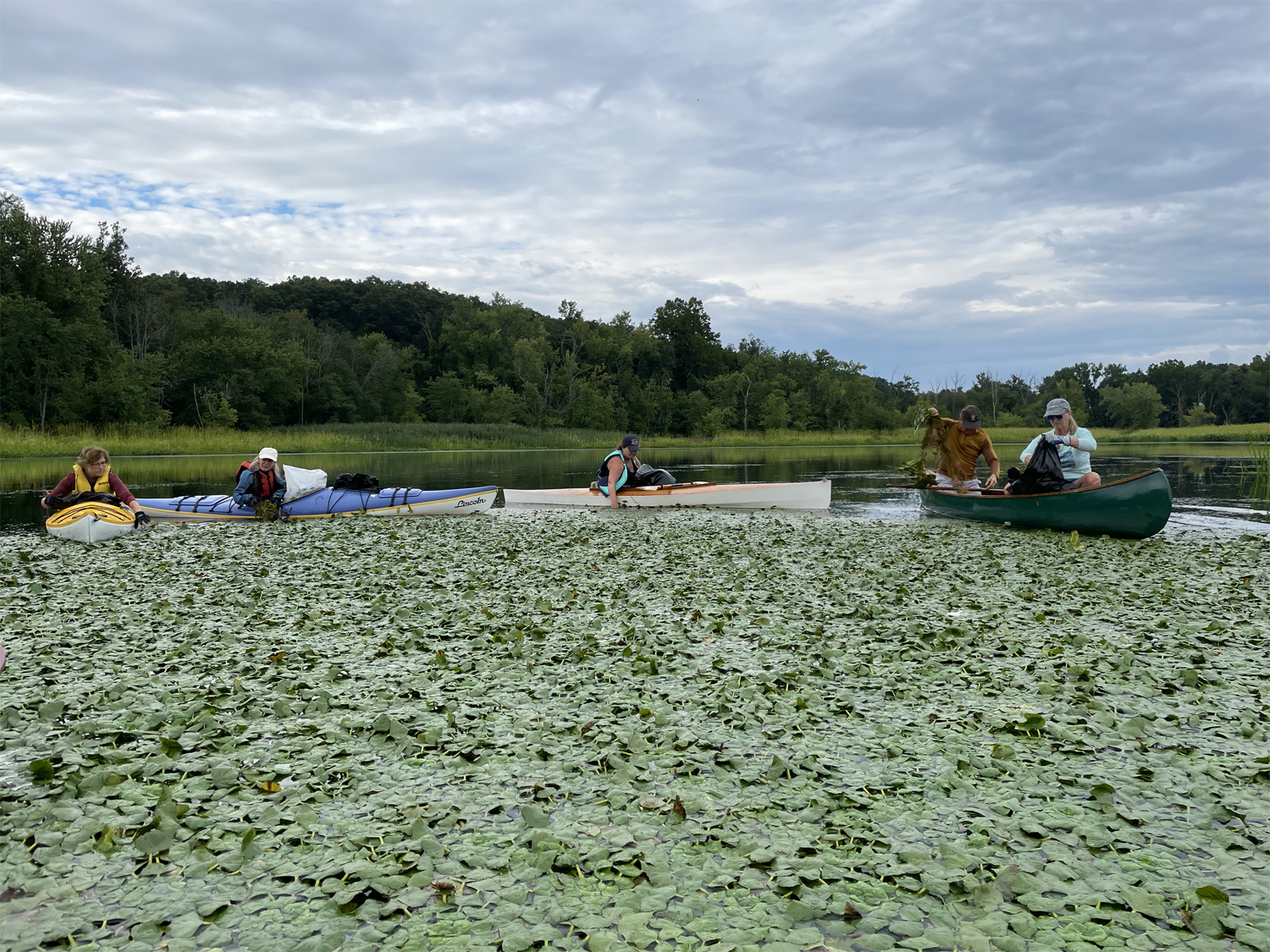
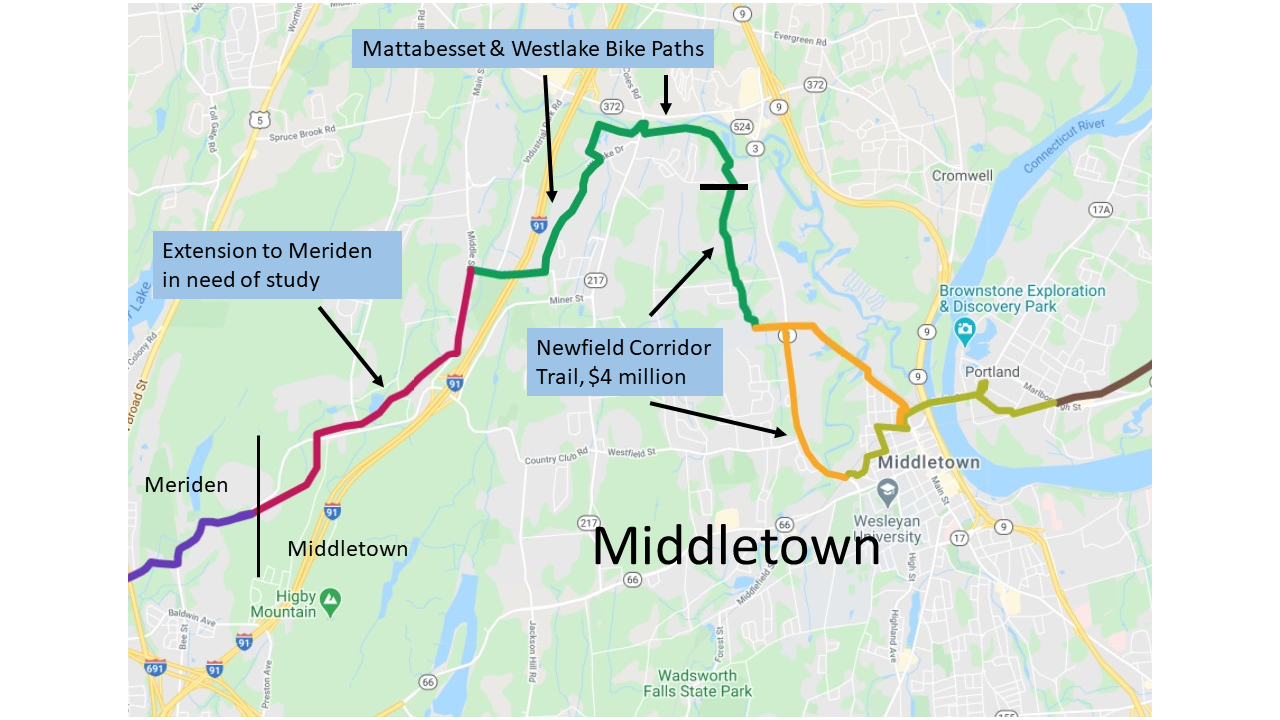 The Jonah Center’s most far-reaching project — to connect the 2 longest multi-use trails in Connecticut — has been awarded 3 grants: a $315,000 route study grant by CT DOT in February 2022; a $500,000 grant by the state bond commission in April 2022; and a $2 million grant by the bond commission in October 2023. We thank Senator Matt Lesser whose leadership and advocacy has enabled this progress and funding. (Please note that none of these funds pass through or benefit the Jonah Center.) These grants will allow the project to proceed from route study (which is now underway) to design and construction work. The most recent $2 million grant is intended to be used as state & local matching funds for $8 million in federal transportation funds to be applied for in the future. In short, we are well on our way to making the connector route a reality.
The Jonah Center’s most far-reaching project — to connect the 2 longest multi-use trails in Connecticut — has been awarded 3 grants: a $315,000 route study grant by CT DOT in February 2022; a $500,000 grant by the state bond commission in April 2022; and a $2 million grant by the bond commission in October 2023. We thank Senator Matt Lesser whose leadership and advocacy has enabled this progress and funding. (Please note that none of these funds pass through or benefit the Jonah Center.) These grants will allow the project to proceed from route study (which is now underway) to design and construction work. The most recent $2 million grant is intended to be used as state & local matching funds for $8 million in federal transportation funds to be applied for in the future. In short, we are well on our way to making the connector route a reality.